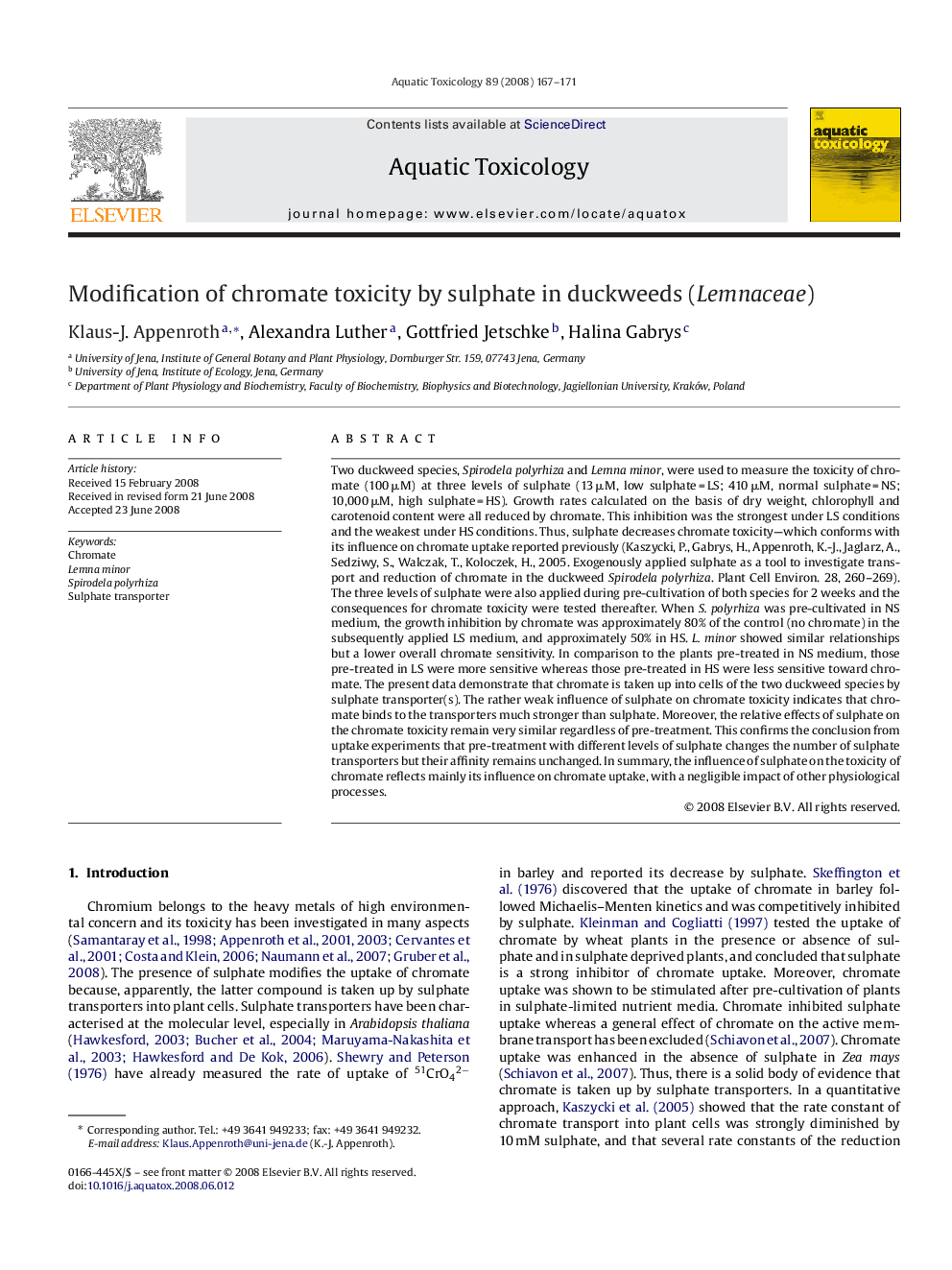| Article ID | Journal | Published Year | Pages | File Type |
|---|---|---|---|---|
| 4530840 | Aquatic Toxicology | 2008 | 5 Pages |
Two duckweed species, Spirodela polyrhiza and Lemna minor, were used to measure the toxicity of chromate (100 μM) at three levels of sulphate (13 μM, low sulphate = LS; 410 μM, normal sulphate = NS; 10,000 μM, high sulphate = HS). Growth rates calculated on the basis of dry weight, chlorophyll and carotenoid content were all reduced by chromate. This inhibition was the strongest under LS conditions and the weakest under HS conditions. Thus, sulphate decreases chromate toxicity—which conforms with its influence on chromate uptake reported previously (Kaszycki, P., Gabrys, H., Appenroth, K.-J., Jaglarz, A., Sedziwy, S., Walczak, T., Koloczek, H., 2005. Exogenously applied sulphate as a tool to investigate transport and reduction of chromate in the duckweed Spirodela polyrhiza. Plant Cell Environ. 28, 260–269). The three levels of sulphate were also applied during pre-cultivation of both species for 2 weeks and the consequences for chromate toxicity were tested thereafter. When S. polyrhiza was pre-cultivated in NS medium, the growth inhibition by chromate was approximately 80% of the control (no chromate) in the subsequently applied LS medium, and approximately 50% in HS. L. minor showed similar relationships but a lower overall chromate sensitivity. In comparison to the plants pre-treated in NS medium, those pre-treated in LS were more sensitive whereas those pre-treated in HS were less sensitive toward chromate. The present data demonstrate that chromate is taken up into cells of the two duckweed species by sulphate transporter(s). The rather weak influence of sulphate on chromate toxicity indicates that chromate binds to the transporters much stronger than sulphate. Moreover, the relative effects of sulphate on the chromate toxicity remain very similar regardless of pre-treatment. This confirms the conclusion from uptake experiments that pre-treatment with different levels of sulphate changes the number of sulphate transporters but their affinity remains unchanged. In summary, the influence of sulphate on the toxicity of chromate reflects mainly its influence on chromate uptake, with a negligible impact of other physiological processes.
